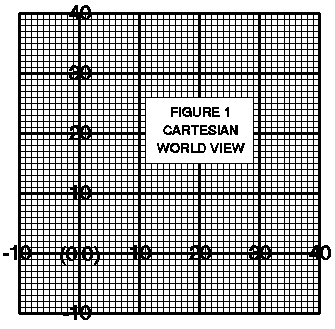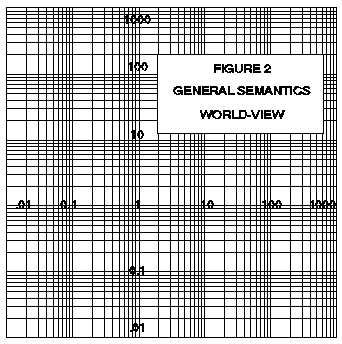
Figure 1. depicts a Cartesian, linear coordinate system in two-space.
II. The present metaphysics behind the ordinary usage of the American language seems to me a Cartesian frame-of-reference. Cartesian comes from Rene Descartes, a Seventeenth century French Philosopher and Mathematician who lived from 1596-1650. Descartes said, "Cogito ergo sum", (I think, therefore I am). I categorize his philosophy as an "egocentric" view of the world. In the cartesian model of "reality", a Euclidean Plane (three-space) marked with a linear interval scale places the "Coordinatizer" at a preferred point, the center of things, (0,0,0), normally referred to as "the Origin". The coordinates of all things are measured from the Origin or are taken relative to the Origin.
III. The General Semantics Metaphysics represents a synthesis of basic Hegelian dialectical process applied to the various dualistic philosophies and the findings of modern science. Each of Kenneth Boulding's Image, Neil Postman's Medium, and Alfred Korzybski's Structural Differential models the process view, in levels, from differing degrees of generality and with particular biases. A succinct and lucid method of showing a visual picture of the world as seen through the General Semantics perspective contrasts the Cartesian coordinate system with a "logarithmic" (LOG-LOG) coordinate system.

Figure 2. depicts a "General Semantics" LOG-LOG coordinate system in two-space.
IV. As in General Semantics, in order for one to plot a point on a LOG-LOG Scale, one must know the approximate levels, with reference to each other, of the points to be plotted. Knowledge of these levels requires that one grasp a gestalt perceived from the consideration of the relationships among a significant proportion of the points examined. This model does not have an "origin". It thereby eliminates any "preferred" frame-of-reference. (Perhaps this explains why-how so many General Semanticists feel so frustrated when "Non-G.S." oriented people ask them to "Start at the beginning"). This G.S. Model is consistent with General Relativity in physics which also has no preferred frame-of-reference.
What is immediately apparent from just looking at these two pictures is that "G.S.ers" and non-G.S.ers "see" the world very differently. It is incumbent upon G.S.ers to realize that while they can see the non-G.S.ers' perspective as a special case of their own world view, non-G.S.ers cannot perceive the G.S. world without undergoing special training.